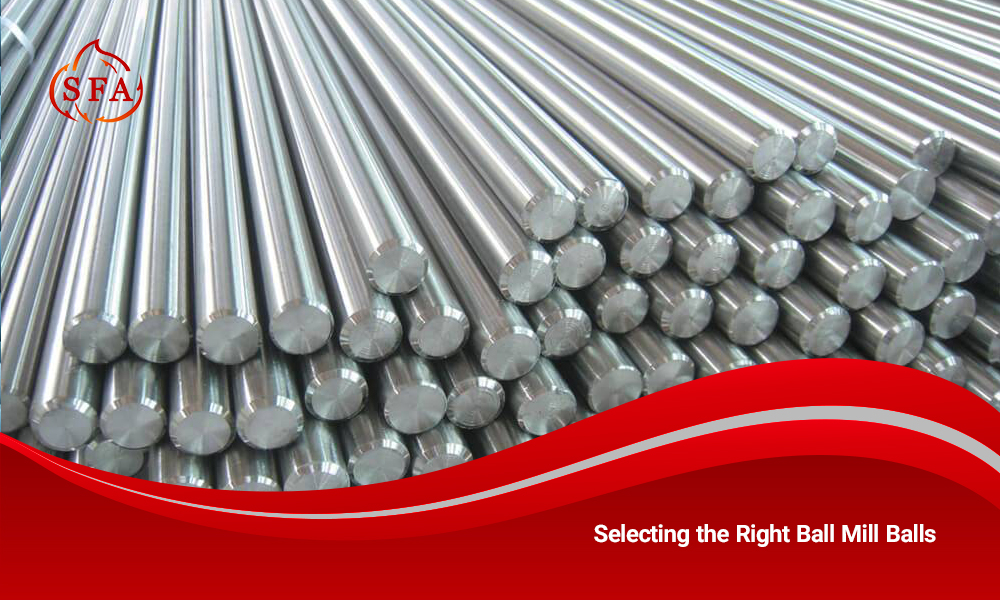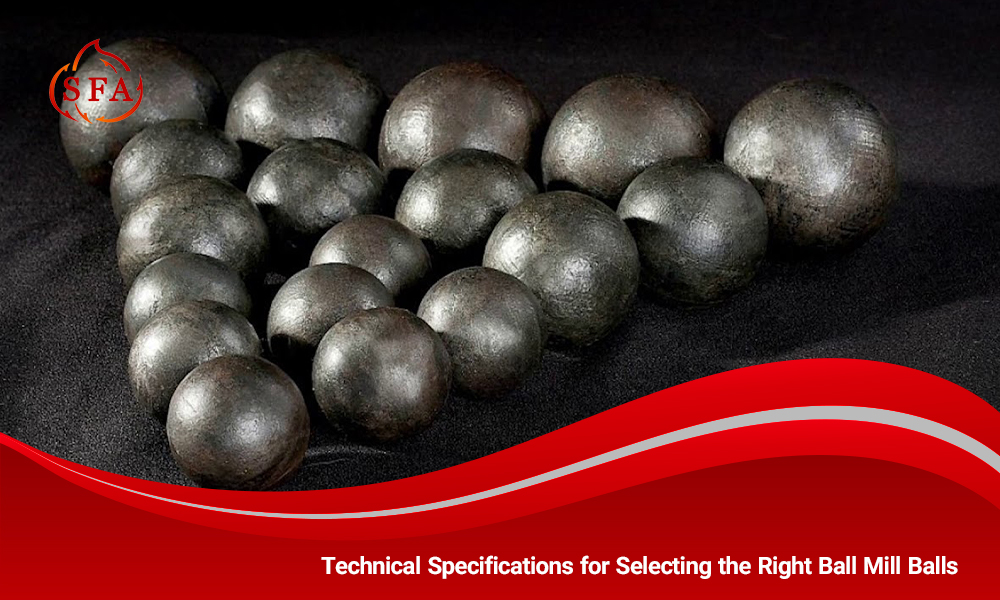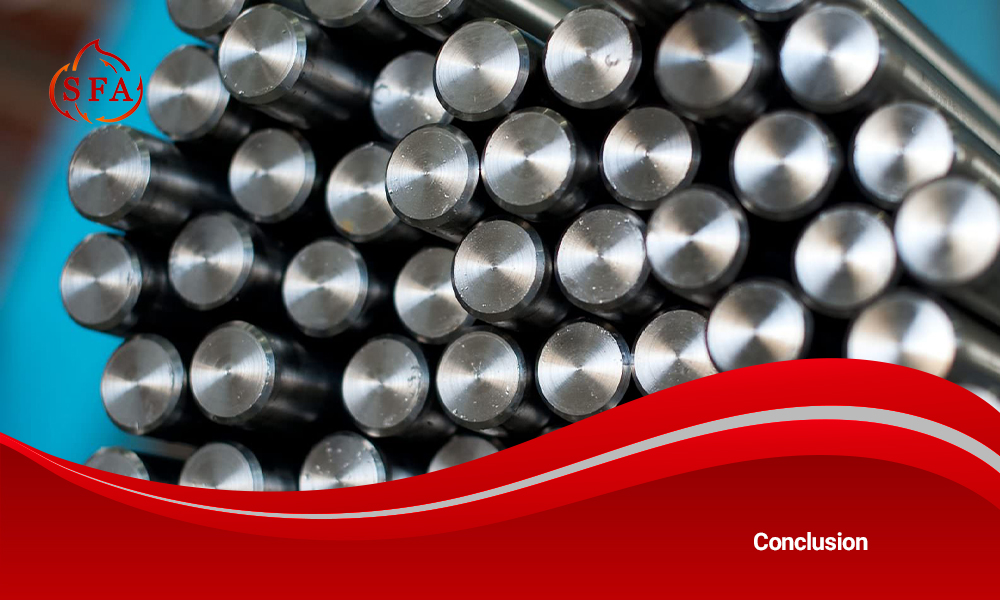

Tips for Selecting the Right Ball Mill Balls for Your Plant
Ball mills rely on the correct selection of grinding media (balls or cylinders) to effectively pulverize materials. Selecting the Right Ball Mill Balls is critical to mill efficiency.
High-quality media improves throughput, reduces downtime, and increases the quality of the final product. Ball mills typically use steel or ceramic balls. The optimal choice depends on the application. For example, Sepahan Atashgah Steel Casting Industries (SFA) produces special cast iron grinding balls for cement, steel, mining, and other industries.
These balls are designed for high wear resistance and continuous performance in heavy-duty grinding.
In this article from the Sepahan Atashgah Steel Casting Industries website, we are going to review the necessary tips for Selecting the Right Ball Mill Balls, so stay tuned.
Importance of Selecting the Right Ball Mill Balls
Selecting the Right Ball Mill Balls can have a direct and significant impact on your mill’s performance. The right ball will not only increase the milling speed, but also produce a more uniform particle size and reduce energy consumption.
Cast steel balls, especially high-chromium or alloy steels, are very hard and wear-resistant, making them ideal for heavy-duty industrial applications. In contrast, forged steel balls typically have higher hardness and impact toughness, making them more suitable for conditions where severe shocks occur.
For applications where product contamination is a concern, ceramic balls (such as alumina or zirconia) are a good choice. These balls have low density and high chemical resistance and can perform the grinding process without affecting product quality.
By selecting the right ball mill balls for your process and plant needs, mills can run at higher speeds with lower ball consumption. At Sepahan Atashgah Steel Casting Industries, our expertise ensures the balls meet global standards and your exact chemical and hardness requirements.
Sepahan Atashgah Steel Casting Industries’ balls are available in hardnesses from 58 to 66 HRC and contain 10 to 30 percent chromium. This provides exceptional wear resistance and long life for mills. All our balls are also manufactured to precise dimensional tolerances, ensuring the correct weight and size for consistent mill performance.
Click to read the article «The Role of Zirconia Grinding Balls in High energy Mills».
Key Factors in Selecting the Right Ball Mill Balls
When Selecting the Right Ball Mill Balls, several important factors must be considered to ensure the best performance and long life of the balls:
1. Material Selection
You need to pay attention to the material selection when selecting the right ball mill balls. You can choose between high-chromium cast steel balls, ductile iron, forged steel or even ceramic balls. Forged steel balls usually have higher hardness and impact resistance and a lower breakage rate than cast balls, but they are more expensive. Sepahan Atashgah Steel Casting Industries (SFA) cast iron balls with high-chromium alloys provide a good balance between toughness and wear resistance. Ceramic balls are suitable for very fine grinding or processes sensitive to contamination.
2. Hardness and Alloy
The hardness and alloy of the balls should match your grinding conditions. Very hard balls wear slower but may be brittle, while softer balls wear faster. Sepahan Atashgah Steel Casting Industries grades range from around 56 HRC to 66 HRC, with alloying elements such as chromium, nickel and manganese adjusted for different processes. In general, higher chromium and greater hardness will increase the life of the balls.
3. Size and Shape
The diameter of the balls has a direct impact on the efficiency of the mill. Industrial mills typically use balls with a diameter of 12 to 50 mm, but Sepahan Atashgah Steel Casting Industries produces balls up to 125 mm in diameter for large mills. Smaller balls are suitable for producing finer particles, but more of them are needed, while larger balls grind coarser materials. Almost all mills use spherical balls, but in some cases cylindrical balls or other shapes can be used.


Technical Specifications for Selecting the Right Ball Mill Balls
For optimum performance of industrial ball mills, the grinding balls must meet precise technical specifications. These specifications include the chemical composition and hardness of the balls, which ensure that your mill operates at maximum efficiency and with minimal problems.
The balls usually have a hardness between 60 and 65 HRC. Levels of key elements—carbon, silicon, manganese, phosphorus, sulfur, and chromium—are carefully controlled. This ensures the balls have high wear resistance and maintain consistent performance over time.
Each batch of balls undergoes quality tests—hardness testing, metallography, and chemical analysis—before use in the mill. These checks ensure that the balls meet industry standards and reduce the risk of premature failure or reduced efficiency.
Selecting the Right Ball Mill Balls with standard specifications not only improve mill performance, but also increase equipment durability and reduce maintenance costs.
Practical Tips on Selecting the Right Ball Mill Balls
In practice, when using and Selecting the Right Ball Mill Balls, observing the following points can optimize mill performance and extend ball life:
- Start with the application requirements: Clearly define your process; specify the type of mineral, grinding speed, capacity, and whether the process is dry or wet, as well as the desired output. Each of these factors will help you narrow down the ball options and make a more accurate selection.
- Consult with experts: Consult with your mill supplier or ball manufacturer to select the right alloy and hardness. If necessary, mill tests will be performed to ensure the balls are performing properly.
- Mixing ball sizes: Using different ball sizes provides better particle size reduction in a single grinding cycle. This method is commonly used in SAG or AG mills and increases the efficiency of the mill.
- Monitoring wear: Monitor ball consumption in kilograms per ton of production. If the balls are wearing too quickly or too slowly, adjust their composition or size.
- Inspecting mill liners: The material of the mill liner can affect the rate of ball wear. Some liners are softer than others to be worn as sacrificially, so choosing balls with the right hardness can prevent damage to the liner.
- Safety and maintenance: Balls should be transported and stored properly and should not be dropped or subjected to severe impact to prevent cracking or damage. Damaged balls should be removed and replaced.
- Total cost approach: Calculate the cost of balls per ton produced. Cheaper balls may not be cheaper in the long run if they have a short useful life.
Selecting the Right Ball Mill Balls with Sepahan Atashgah Steel Casting Industries
At Sepahan Atashgah Steel Casting Industries (SFA), we have over three decades of experience in metal casting. Today, we are recognized as a trusted supplier in domestic and international markets. For years, customers in steel, copper, mining, cement, and other sectors have relied on us to supply industrial mill balls and liners.
Our balls are manufactured with a special focus on abrasion resistance and high toughness. They do not break under the most severe operating conditions and retain their spherical shape. We use advanced casting and heat treatment technologies to increase the mechanical hardness of our products. This reduces wear rates and helps customers minimize ball consumption and operating costs.
We manufacture grinding balls in standard sizes ranging from 15 mm to 125 mm in diameter. We also produce cylindrical media (Cylpebs) for specialized mill applications. All products undergo strict quality control to ensure consistent and reliable performance.
For customers seeking expert advice and optimal product selection, our Commercial Manager, Mr. Ahmad Ahmadi, is ready to guide you and provide the best solution for your industrial needs.


Conclusion
Selecting the Right Ball Mill Balls is a critical decision for any mill. By considering the ball material, hardness, size, and mill conditions, you can optimize productivity. Choosing the right balls also reduces costs. High-chromium cast iron balls from reputable manufacturers, such as Sepahan Atashgah Steel Casting Industries, provide both durability and cost-effectiveness.
Ceramic media can be used for contamination-sensitive mills or very fine processes. Also, you should always plan for ball wear; the goal is to get the maximum life per dollar spent. As one industry expert recommends, base your ball selection on total kilograms used and their cost, not just the initial price.


